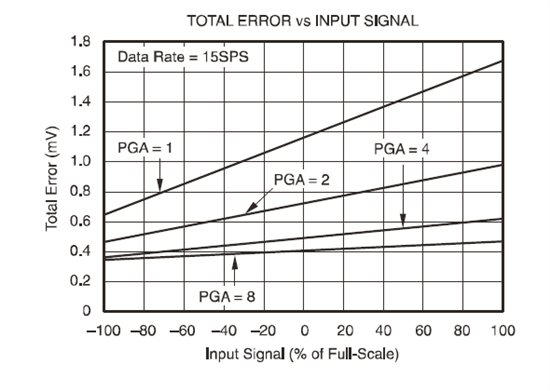My customer is looking for the ADC conversion error/accuracy of ADS1110. They did not see it listed out directly in its datasheet. There are different kinds of errors like offset error, gain error and they are asking how they add to the total error. The ADC is configured to be 15 bits, PGA=1.
What they found from the specification of another ADC is as simple as “Conversion Error <= 1/2 LSb”, and this is the kind of information they are looking for.


